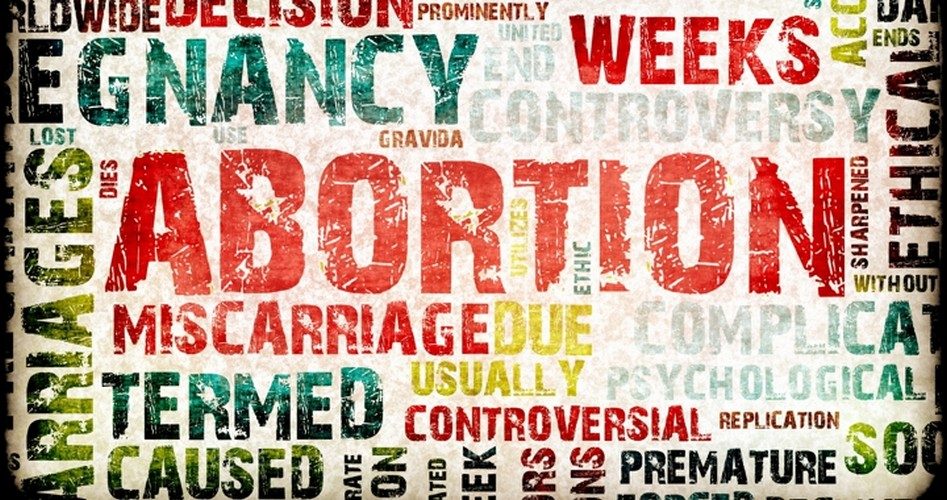
On Tuesday, pro-life leaders and medical professionals testified before the Ohio Senate Judiciary Committee in support of Senate Bill 145, the Dismemberment Abortion Ban, sponsored by Senators Matt Huffman (R-Lima) and Steve Wilson (R-Maineville).
Dismemberment abortion, also known as dilation and evacuation (D&E), is a procedure in which the woman’s cervix is dilated before steel instruments are used by the abortionist to dismember and remove the baby from the uterus. This procedure is typically done in the second trimester of pregnancy, when the baby is well developed, with brain waves, heartbeat, and actions of a fully formed infant.
S.B.145 would prevent this barbaric ritual, excepting when the mother’s life is in danger, thereby saving the lives of thousands of unborn. “State lawmakers said the gruesome abortion method is used in 95 percent of second-trimester abortions in Ohio,” according to the pro-life website lifenews.com.
Mike Gonidakis, president of Ohio Right to Life — the state’s largest pro-life organization — states, “The Dismemberment Abortion Ban is a crucial step in the fight for the recognition of human rights for the unborn.” He also notes, “Dismemberment abortion kills a human child by using clamps, forceps, and scissors to rip her apart limb from limb. At this stage in development, the baby is somewhere between the size of a lemon and cantaloupe, has brainwaves, a beating heart and every organ system in place. As much as Planned Parenthood and NARAL will try to distract from these facts with euphemisms about choice, this is the cold hard reality. Dismemberment abortions are brutal, inhumane and must be stopped immediately.”
In the hearing, Dr. Donna Harrison, executive director of the American Association of Pro-Life Obstetricians and Gynecologists, insists, “To talk about D&E requires that you leave the sterility of political bantering, and enter the reality of what a D&E actually consists of.”
Unfortunately, reality isn’t the driving force behind the actions of some.
At the hearing on June 13, the Ohio statehouse became the stage of a silent protest by abortion activists with the pro-abortion group NARAL (National Abortion and Reproductive Rights Action League), mentioned earlier by Gonidakis. Dressed in red robes and white bonnets, the group sat ominously quiet in opposition to what they consider to be the enslavement of women. These costumes, antics, and ideas were inspired by the dystopian novel (and now Hulu series) The Handmaid’s Tale written by Margaret Atwood.
As Wikipedia notes, the book’s story is set
In a dystopian near-future, [where] the totalitarian and Christian fundamentalist government of Gilead rules the former United States amidst an ongoing civil war. Society is organized along a new, militarized, hierarchical regime of Bible-inspired social and religious fanaticism and newly-created social classes, in which women are brutally subjugated, and by law are not allowed to work, own property, control money, or read. Widespread infertility due to warfare-induced environmental contamination has resulted in the conscription of the few remaining fertile women — called Handmaids, according to Biblical precedent — who are assigned to the homes of the ruling elite, where they must submit to ritualized rape with their male masters in order to become pregnant and bear children for those men and their wives.
These outlandish ideas, it seems, aren’t just fodder for what some would call entertainment. There are those who actually identify with these characters, seeing themselves also as slaves with no rights because of limitations on their actions. These concepts are, apparently, the author’s own personal beliefs put into writing. In an interview with Huffington Post, Atwood claims she would not consider herself a real activist, as activists are paid for their work. However, the Huffington Post article goes on to state, “Her perch as an artist … makes it possible for her to say the things that others want to say, but feel unable to.” In the same interview, Atwood declares, “It is really a form of slavery to force women to have children that they cannot afford and then to say that they have to raise them.”
In essence, Atwood and her fellow abortion advocates believe women shouldn’t have to take responsibility for their actions.
The fact is, S.B. 145 and other bills like it aren’t primarily addressing pregnant women who are victims of rape, as in Atwood’s novel. (Though, it is interesting to note that, according to Atwood’s annotation of Season 1 of the television adaptation of The Handmaid’s Tale, even the women in her book who were forced to get pregnant wanted their babies.) In reality, the number of abortions as the result of rape is miniscule in comparison to the abortions done for convenience.
In 2015, according to abort73.com, there were 71,740 abortions in the state of Florida. Of those, .085 percent were due to rape, while 92.330 percent were listed as due to “no reason.”
While abortion is never acceptable for any reason, it is a blight on our society that the vast majority of our unborn are being sacrificed at the altar of convenience.
The brutal killing of our unborn no longer needs justification. Instead, we must justify the saving of their lives. And, we must do so, it seems, against the flow of a culture that confuses reality with fantasy.
In response to Tuesday’s hearing, Gonidakis said, “Today’s testimonies gave perfect clarity to the medical, ethical and legal reasons for passing this legislation now.” He continues, “It is incumbent on the State of Ohio to lead the way in protecting the most vulnerable among us from the brutality of dismemberment abortions. With this legislation, Ohio can take the lead in changing U.S. abortion policy, and winning hearts and minds.
There is no doubt that America’s abortion policy needs to be changed, and that it can be done only by the changing of hearts and minds.It is, therefore, the hope of Ohio Right to Life, and other pro-life advocates, that this bill will be the next step in the strategy to change the policy and end abortion.



